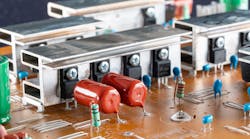Understanding Common Isolated Power ICs for Digital Isolation Systems (Download)
A high-voltage circuit design requires isolation to protect human operators, enable communication to lower-voltage circuitry, and eliminate unwanted noise within the system. Digital isolators offer a simple and reliable path toward achieving high-voltage isolated communication in industrial and automotive applications.
Maintaining the integrity of a signal across an isolation barrier requires the isolation of all coupling paths between the primary and secondary sides of the circuit, including the power supplies. While a digital isolator’s secondary side typically requires little power, system designers often include an additional power allowance to supply power for multiple devices.
Many options are available when designing an isolated power supply for digitally isolated circuits. This article will introduce some of the most popular topologies—flyback, half-bridge (H-bridge) inductor-inductor-capacitor (LLC), push-pull, and integrated isolated data and power solutions—along with design considerations. But first, let’s address the need for isolated power.
